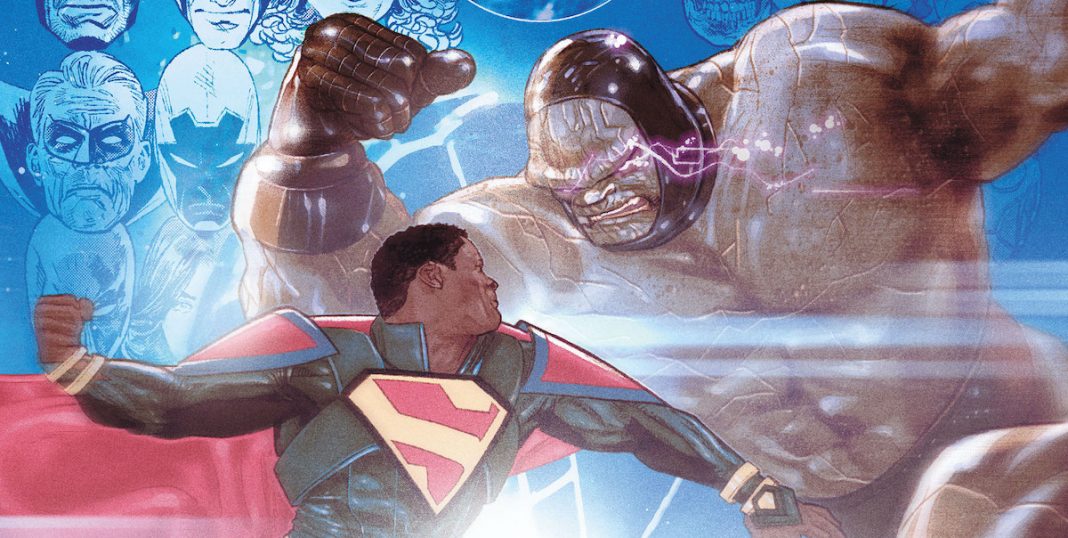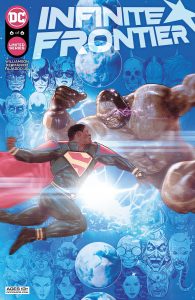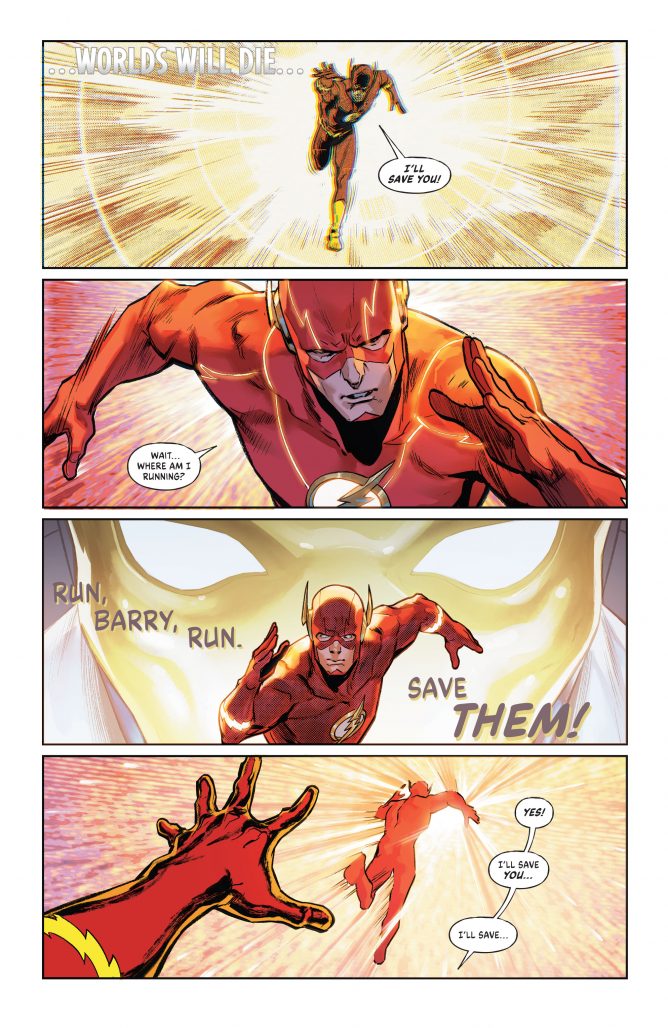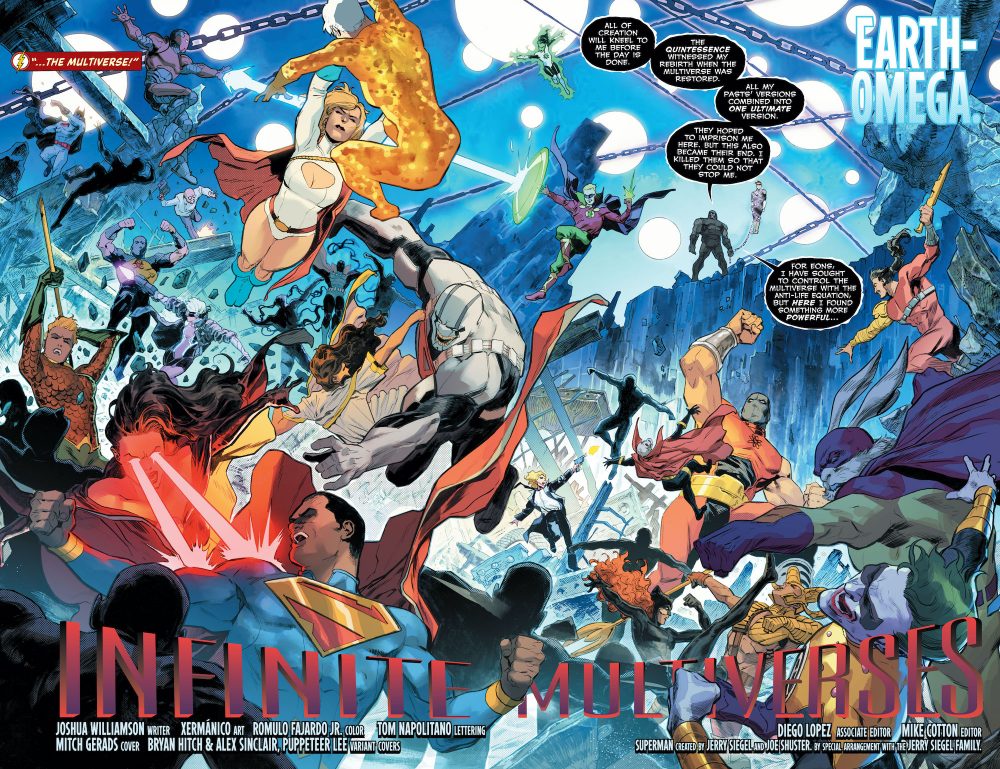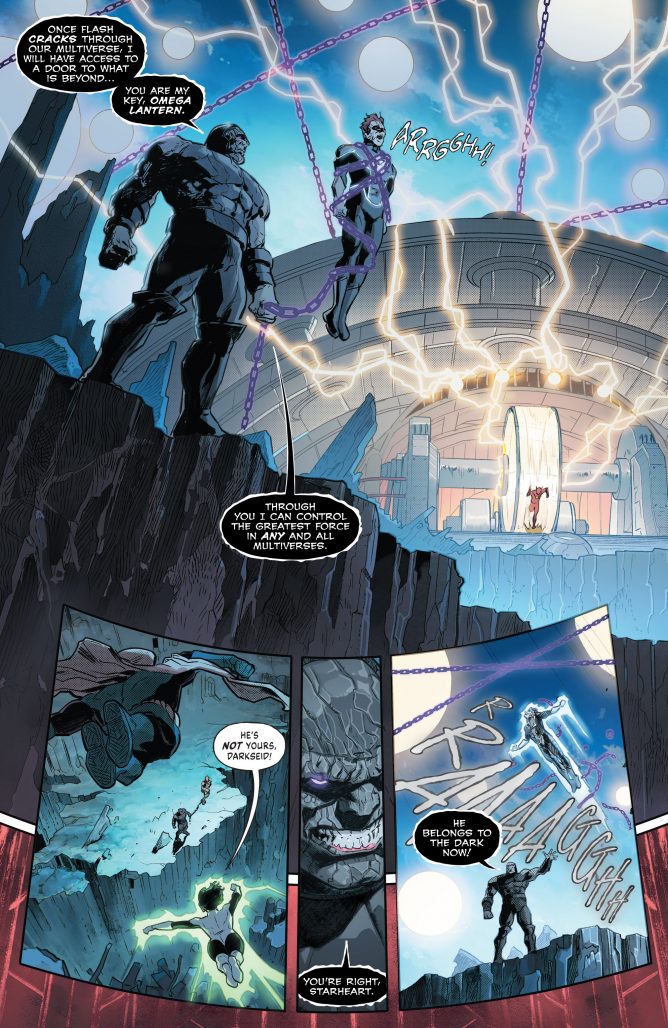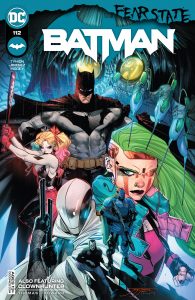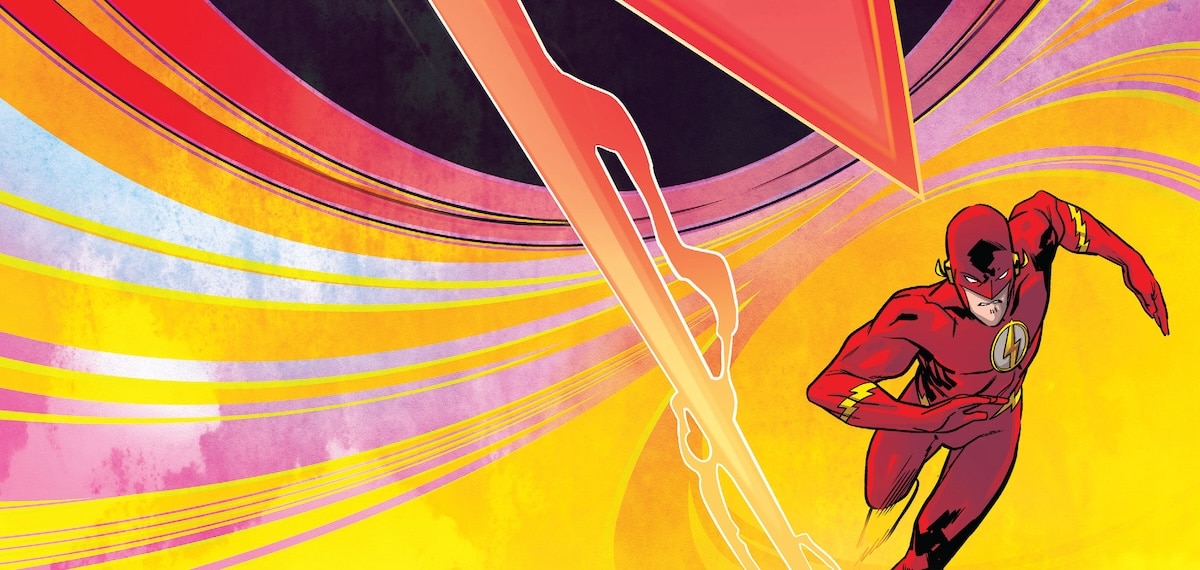THIS WEEK: We look at Infinite Frontier #6, which marks the finale of a madcap event that caters to some of our favorite things about DC Comics. Plus, more Batman – Fear State!
Note: the reviews below contain spoilers. If you want a quick, spoiler-free buy/pass recommendation on the comics in question, check out the bottom of the article for our final verdicts.
 Infinite Frontier #6
Infinite Frontier #6
Writer: Joshua Williamson
Artist: Xermanico
Colorist: Romulo Fajardo, Jr.
Letterer: Tom Napolitano
It is a major time of upheaval for comics right now, friends, specifically for the ways we access and consume, as well as for the business models powering the creators. Lead Batman writer James Tynion IV, for example, is leaving from DC Comics (the subject of this very recurring column!), to make even more creator-owned comics (he has quite a few already) via Substack, an email newsletter company with a ton of venture capital money that is paying creators handsomely and allowing them to retain all rights to the print publications of their work.
DC Comics itself has undergone some major changes as well, aside from simply having one of its top creators move on. Just before the pandemic, the publisher’s leadership started to turnover, with Dan DiDio heading out, followed in the months to come by many of the other editors who had shaped the publisher for the past decade. Eventually, long-time editor Marie Javins was given the editor-in-chief position, and Daniel Cherry was brought in for the new position of DC Comics general manager. Essentially, the old guard was out and an entirely new guard was brought in. I mention all of this in this column primarily about Infinite Frontier #6, because I think this series — which was excellent, but more on that later — would not have happened without this editorial churn.
Now that it’s ended with Infinite Frontier #6, I’m fully comfortable describing this story as a multiversal conspiracy comic that makes gleeful use of DC Comics excellent bench of B, C, and even D-List characters. These are all things I discussed with the story’s writer Joshua Williamson in advance of Infinite Frontier #2, but I’ve been doing this long enough to have learned that the way a writer promotes a comic is not always the way it plays out on the pages. This is not the case with Infinite Frontier #6.
During the aforementioned previous era at DC Comics, the publisher (especially in the final years) seemed to operate with an almost-oppresive amount of restraint. The biggest stories were almost always channeled through the biggest characters, your Batmans, Supermans, Wonder Womans, etc., and in the post-Rebirth status quo, the multiverse was almost exclusively used as a tease, rarely deployed in meaningful ways and never coming close to accessing the full potential of multiple realities, always a major strength for DC Comics done well.
Infinite Frontier from its beginning felt like a deliberate attempt to counter all of that restraint. There were no Batmans, Supermans, nor Wonder Womans, at least not the most familiar iterations. Instead, we had President Superman and Flashpoint Batman Thomas Wayne, and they weren’t even the focal points, not really. That honor went to characters like Roy Harper and Mr. Bones and Cameron Chase. The story still felt huge, with the entire earth of superheroes we’ve all followed for years grappling with the constant flow of threats to them through the multiverse, but we were seeing those ideas through new characters, getting the full impression of their continuity rather than the characters we typically see handling all of this.
It’s a savvy choice, one that has paid dividends throughout the run of Infinite Frontier and continues to do so here in Infinite Frontier #6. That’s one of the qualities that made me enjoy this book so much. On a technical level, this is an incredibly well-done comics, powered by the artwork of rising start Xermanico, who is colored here by Romulo Fajardo Jr. and lettered by Tom Napolitano. I’ve been a fan of Xermanico’s clean and strong linework for a while now, and in this issue the restraint (sensing a theme?) is again off, with just a perfect double-page spread at the start of this story that brings together so many of the heroes and villains we’ve been following in a classic, heavily-detailed superhero throw-down. You get Green Lantern Alan Scott and Machine Head from Earth-8 and Power Girl and so many others, and it all looks incredible.
The last of the major successes in this book to me is the way it is aware of the publisher’s past without feeling overly saccharine or boringly nostalgic. The story opens with the Barry Allen Flash running on a wheel, a nod to Crisis on Infinite Earths, of course, but not one that feels obligatory. In that same vain, this book also prominently features the Thomas Wayne Batman from Flashpoint as well as Darkseid no-nonse omega blasting a character to nothingness. In this way, Infinite Frontier #6 wants to remind readers that past stories of this magnitude still matter, very much so, but it somehow never feels forced or reliant upon looking backward.
I’ve thought about how this is a lot over the weekend — I had 1,500-plus miles to drive, but that’s another story… — and I think the series avoids that pitfall because of the lack of restraint I mentioned earlier. Two things have become true of DC Comics in the past five years or so: its biggest events tend to just throw nods to the past into a blender even if it’s hard at times to make sense of why, and there have seemed to be limitations on which characters can be at the center of these stories. By lifting the latter restraint, Infinite Frontier #6 immediately makes the other more interesting.
It all leaves me really excited to see what’s coming next after this story. We know Williamson will be working on a Justice League Incarnate book, which is poised to go deeper into the multiverse, and on the page this week we learn the New Gods will likely feature prominently into what’s coming, as will the Flash family and maybe even the Legion of Superheroes (Darkseid says, “But only I will control…the Great Darkness!”. These are three more fantastic DC properties that I would love to see handled in 2021 and 2022 with less restraint. Kudos to all involved with this one.
Verdict: Buy
 The Round-Up
The Round-Up
- Now, did you catch the part above where I said I drove 1,500 miles this past weekend? Well, if you did, you thereby already got my excuse why the only other series I’m rounding up this week is Batman (it’s not responsible to read and drive, friends). Fortunately, Batman was good! It feels a little bittersweet with the Tynion era coming to an end in December, but this Fear State story so far is very very good. I especially like the way it continues to march toward the horrifying status quo we saw in Future State. I didn’t really know how that event would function moving forward. In it, most of DC’s titles jumped forward into a darker future, and it seemed like maybe that was all going to be contained. But the creators are using it now to really give their current storylines stakes. For example, why does Batman Fear State matter? Because if our heroes aren’t careful, we might just get the fascistic Gotham City we saw in Future State. It’s a hard thing to pull off, but this story (and several others across the line) are doing it ably. I can’t wait to see how it ends.
Miss any of our earlier reviews? Check out our full archive!


